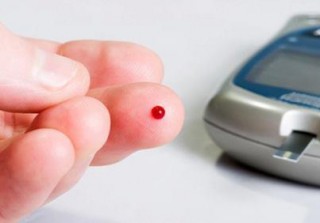Welcome back to WHR You Decide!
 We are honored and pleased to announce our next special guest host, Brett Wagner, famed actor from Touch, Castle, The Mentalist, Tekken, Weeds, Bicentennial Man, Angel, Sliders, and many more wonderful television and movie appearances!
We are honored and pleased to announce our next special guest host, Brett Wagner, famed actor from Touch, Castle, The Mentalist, Tekken, Weeds, Bicentennial Man, Angel, Sliders, and many more wonderful television and movie appearances!
Brett Wagner will join us on You Decide Sunday August 26, 2012 8pm Eastern time, 5pm Pacific time to discuss his “Life With Diabetes”.
Life With Diabetes:
The disease is straight forward. You can expect to be constantly thirsty, exhausted to the point of sleeping most of the day, any injuries or wounds likely will not heal properly, you could develop ugly red and purple marks on your skin; you may have to have limbs amputated. Blurry vision, hunger and weight loss despite eating more food, can also be symptoms.
Those are the things you can see. Underneath the skin, other fun things are happening. Since the pancreas is no longer producing insulin to help glucose enter and feed cells in the body, the body thinks it is starving and organs begin failing. The most common organ failure is with the kidneys. Once they no longer function, the body cannot rid itself of waste products. The only solution is kidney dialysis, which removes the waste from the kidneys by external means. Without dialysis, the person will die. The brain is also affected. Over time, a combination of dehydration in the body due to excess urination, and too much glucose in the blood surrounding brain cells damages those cells. This leads to confusion and eventually convulsions and coma.
 Having the symptoms of diabetes does not mean a person actually has diabetes. It is important to have the possibility evaluated by a doctor. According to the Mayo Clinic, the most common method for this is, “after fasting from food and drink for at least eight hours, the patient will be given a drink containing a measured amount of glucose. Blood samples are drawn continuously for two hours and the levels of glucose are measured and recorded. A reading over 200 mg/dL indicates diabetes. A reading between 150 and 200 mg/dL is a grey area where a patient may be determined to be at risk for developing diabetes or “pre-diabetic.” Blood glucose levels in a diabetic will rise faster and stay higher longer than in a healthy person. This test is the most accurate way to determine a diagnosis”.
Having the symptoms of diabetes does not mean a person actually has diabetes. It is important to have the possibility evaluated by a doctor. According to the Mayo Clinic, the most common method for this is, “after fasting from food and drink for at least eight hours, the patient will be given a drink containing a measured amount of glucose. Blood samples are drawn continuously for two hours and the levels of glucose are measured and recorded. A reading over 200 mg/dL indicates diabetes. A reading between 150 and 200 mg/dL is a grey area where a patient may be determined to be at risk for developing diabetes or “pre-diabetic.” Blood glucose levels in a diabetic will rise faster and stay higher longer than in a healthy person. This test is the most accurate way to determine a diagnosis”.
If it is discovered that the patient has diabetes, then treatment of diabetes (Types 1 and 2) usually proceeds with diet and exercise. It is not about what a diabetic cannot eat, but about eating a well-balanced diet to ensure the body is well fueled. It is not about a requirement to go to the gym and exercise, but rather about getting into good physical shape, increasing activity, and setting health goals for weight and nutrition. A well balanced diet combined with exercise works to make the body work as efficiently as possible.
In some cases, changes in diet and exercise patterns are enough to take the extra stress off the pancreas and diabetes can be brought completely under control. In other cases, a good diet and exercise goes great lengths to bring glucose levels under better control and the rest can be supplemented with drug therapies.

According to the University of Cincinnati, a diabetic diet is all about eating right and not deprivation. In fact, many non-diabetic people have chosen to follow the diabetic diet to live a healthier lifestyle and to lose weight.
The American Diabetes Association recommends diabetics break their diet into the following:
50% carbohydrates
20% proteins
Less than 30% fats
A good diabetic diet is really no different than a good diet of a non-diabetic. It is complete with ample amounts of fruits and veggies, whole grains and beans, dairy products, and lean meats, poultry, and fish.

Other considerations in developing a diabetic diet include taking magnesium supplements because magnesium is a useful vitamin to guard against the progression of Type 2 diabetes. Watch the use of saturated fats in butter, lard, or red meats. Unsaturated fats found in olive oil are much healthier. Sugary foods such as baked goods do not need to be avoided entirely, but should be reserved for special occasions and always consumed in moderation.
Consistency is key in a diabetic diet. Skipping or delaying meals can have drastic effects on blood glucose levels. Overindulging can have similar effects. Chosen carefully, a diabetic can enjoy the same meals as the rest of his or her family.
Be aware that exercise is as important as a healthy diet. A reasonable exercise goal is 30 minutes a day of aerobic exercise. Exercise will have wide ranging effects across the body, including an increased ability to control blood glucose levels.
Although exercise is essential for health and well-being, often other activities are put ahead of it on the never-ending “to do” list. Common barriers are time, money, child care or transportation. However, exercise can be incorporated into daily life in the form of small bursts of time and it does not require lots of money to achieve good results. Walking briskly on a daily basis is a wonderful activity to increase exercise. Ideally, maximal benefit occur with intensive, prolonged activity, but more recent studies indicate that smaller increments of less intense activity can lead to health benefits as well.
Be aware of glucose levels. Diabetics must take care when changing exercise patterns as a sudden change can destabilize blood sugar levels. When starting exercise glucose levels need to be monitored more frequently to observe responses to increased activity. Food intake, as well as insulin and oral medications, must be matched with current exercise levels.

Not every diabetic requires insulin injections. There are classes of drugs that help the body to perform specific steps that it naturally uses manage glucose levels. These medications can tell the pancreas to produce more insulin and or the cells to respond better to the insulin, but the problem is much more complex than taking a pill.
In Type 1 diabetes and advanced Type 2 diabetes, insulin is required for glucose management. It’s important to note that insulin treatment isn’t failure. Some Type 2 diabetics may feel as though they’ve failed by having to use insulin, but this is not the truth. Every case is different and each patient responds in different ways to treatment.
The natural course of diabetes is for a progression to where the pancreas wears out and insulin is required. How fast the pancreas wears out is dependent on a variety of factors, including weight, diet, genetics, and glucose control.

There are many famous people with diabetes including, Halle Berry, Drew Carey, Wilford Brimley, Dick Clark, Jerry Lewis, Mary Tyler Moore, Carroll O’Connor, Spencer Tracy, Mae West, Victor Garber, Sugar Ray Robinson, James Brown, Ella Fitzgerald, Aretha Franklin, Randy Jackson, Neil Young, and many more. If they can manage their diabetes under demanding lifestyles, it should be relatively easy for tho se with less hectic schedules.
se with less hectic schedules.
The Insulin pump, used by many diabetics to make their lives much easier, was invented by Dean Kamen, an undergraduate student at Worcester Polytechnic Institute. He invented the first portable infusion pump. This device was the precursor of the insulin pump and revolutionized medication delivery for a variety of conditions including chemotherapy and others.
Dean formed his first company called AutoSyringe and continued to further develop multiple uses for his portable infusion pump, most notable the insulin pump. He sold AutoSyringe to Baxter Health Care when he was only 30 years old in 1981.
A common joke for people with diabetes, is that when the first insulin pump was fitted to the very first patient, the patient asked nervously, “will I be able to have sex with this pump?” To which the doctor replied, “Uh, sure, I guess, but wouldn’t you rather have sex with your wife?”
 Thanks to Kenn for final staging of the audio and images in this news article and thanks to you for stopping by WormholeRiders News Agency!!
Thanks to Kenn for final staging of the audio and images in this news article and thanks to you for stopping by WormholeRiders News Agency!!
We look forward to seeing you for our exclusive interview with Brett Wagner this Sunday 5 PM PST 8 PM EST!
Please feel free to leave a comment here, click an icon below to share this interview with your friends, or you can visit and follow me on Twitter by clicking on my avatar to the right.
Regards,
Thank you.
ArcticGoddess1 (Patricia)

